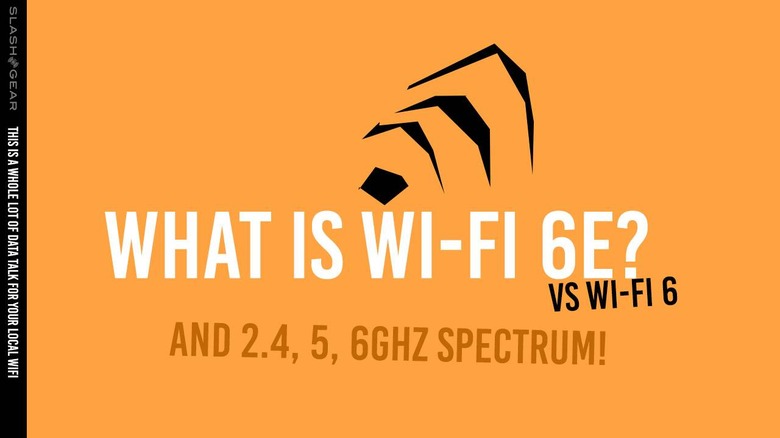Wi-Fi 6E defined: Up to 6GHz to compliment 5G
Today the official Wi-Fi Alliance introduced the term Wi-Fi 6E as a differentiator from the original Wi-Fi 6. With Wi-Fi 6E, users will know that a device will have access to 6Ghz wi-fi spectrum. Devices out right now with Wi-Fi 6 have access to 5Ghz operation. In the near future, some new devices will be capable of Wi-Fi 6 and beyond – into 6Ghz – so the Wi-Fi Alliance created a slightly more elite term, Wi-Fi 6E.
Wi-Fi 6E vs 6: What's the difference?
Wi-Fi 6E has access to all the benefits given to devices with the Wi-Fi 6 designation. Wi-Fi 6E ALSO has access to 6Ghz operation, or what the Wi-Fi Alliance defines as "an important portion of unlicensed spectrum that may soon by made available by regulators around the world."
Wi-Fi 5 was another name for the 802.11ac parameter, while Wi-Fi 6 is aka 802.11ax. Wi-Fi 5 had access to 5Ghz Frequency, while Wi-Fi 6 has access to 2.5 and 5Ghz frequency. The max data rate of Wi-Fi 5 is 3.5 Gb/s, and Wi-Fi 6 goes up to 9.6Gb/s. Wi-Fi 6E is the same as Wi-Fi 6, except that it ALSO has access to 6Ghz spectrum frequency.
This is sort of separate from 5G, but it compliments the near future of the internet data market. Once 5G gets rolling across the world, we'll see apps and networks that depend on 5G-speed data. To make sure Wi-Fi is ready to meed that demand, 6Ghz spectrum and all the benefits of Wi-Fi 6 (and 6E) are defined by the Wi-Fi Alliance.
Why should I care?
If you're reading this in early 2020, you probably don't need to care about Wi-Fi 6E at all. If the marketplace evolves at an immense speed, we might see 6Ghz released for use by governments around the world for use by everyday average citizens.
"6 GHz will help address the growing need for Wi-Fi spectrum capacity to ensure Wi-Fi users continue to receive the same great user experience with their devices," said Edgar Figueroa, president and CEO, Wi-Fi Alliance. "Wi-Fi Alliance is introducing Wi-Fi 6E now to ensure the industry aligns on common terminology, allowing Wi-Fi users to identify devices that support 6 GHz operation as the spectrum becomes available."
The Wi-Fi Alliance wants to get out ahead of the industry here with a term they can all use. If they were late on this particular point, we'd see a variety of terms used for Wi-Fi 6 (plus 6Ghz!) and so forth – and that's just messy.
Once 6GHz spectrum is made available by regulators, you'll likely see "Wi-Fi 6E" appear on promotions for new routers and smartphones in short order. The difference between Wi-Fi 6 devices and Wi-Fi 6E devices won't be massive right out the gate. Unless you depend on the absolute cutting-edge speeds and lack of latency and so forth, you can probably just choose Wi-Fi 6 devices if you have the choice between 6 and 6E, unless the prices between those two devices are quite similar.
The overarching story here has us all benefit from the opening up of 6Ghz spectrum because we'll all have more mobile data elbow room, so to speak – and faster data, and and lower latency.
